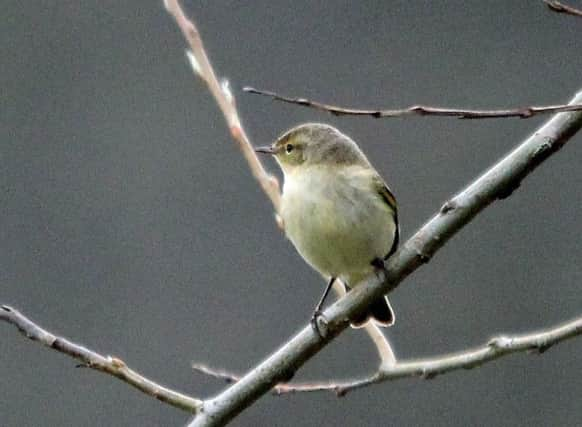Birdwatch: Skies alive with sounds of the chiffchaff


Chiffchaffs have been singing in woods across the region, small olive-green birds easily seen in the still bare branches,
Their familiar chiff chaff chiff chaff song is one of the landmark sounds of the seasons.
Advertisement
Hide AdAdvertisement
Hide AdChiffchaffs sing on migration so some of the birds we are hearing will be moving on further north. But others will have already established territories ready for the arrival of the females.
Soon the chiffchaffs will be joined by willow warblers which are very similar in appearance but with a totally different song, a beautiful descending trickle of notes.
Other differences are that the chiffchaff has a darker beak and legs while the willow warbler tends to have more reddish legs.
The first garganey ducks are also back with a pair at Broomhill Flash, South Yorkshire.
Advertisement
Hide AdAdvertisement
Hide AdThis is the only duck species in Europe that is entirely a summer visitor, spending the winter in West Africa and forming pairs there before the spring migration which is mainly through Italy.
The garganey is the same size as the teal but the drakes are easily recognised by bright white half moon shaped ‘eyebrows’ which are used during courtship displays.
The females are harder to tell apart from female teals but have larger bills and a distinctive face pattern with a dark supercilium and pale spot at the base of the bill.
Other spring migrants have included more sand martins, two house martins off Flamborough Head on Tuesday and a ring ouzel off Reighton Gap, ringed and little ringed plovers, white wagtails and ospreys making their way north to Scottish breeding sites. A wheatear was seen on Warsett Hill, on the North York Moors and more should be back by this weekend.
Advertisement
Hide AdAdvertisement
Hide AdMale bitterns have also been booming to attract mates - I heard my first of the year on a sunny morning last week.
At first the volume is somewhat subdued but will soon gather in strength until a bittern in full voice can be heard up to two kilometres away.
Winter visitors still here include flocks of fieldfares and redwings, singing together are they prepare to leave while there are still good numbers of waxwings in Yorkshire, especially around Sheffield and there are still some flocks in Scotland.
Scaup have been seen in a number of places including four drakes on the refuge at the Wheldrake Ings reserve while a drake ring necked duck was seen again on the Nosterfield Local Nature Reserve.
Advertisement
Hide AdAdvertisement
Hide AdA flock of shorelarks is still being seen at Crook Ness to the north of Scarborough while two were seen inland this week at Stainton pit tip, South Yorkshire.
Great grey shrikes are still here with one at Acaster Malbis, York, two in Langdale Forest, North Yorkshire and another at Greave’s Piece, Sheffield.